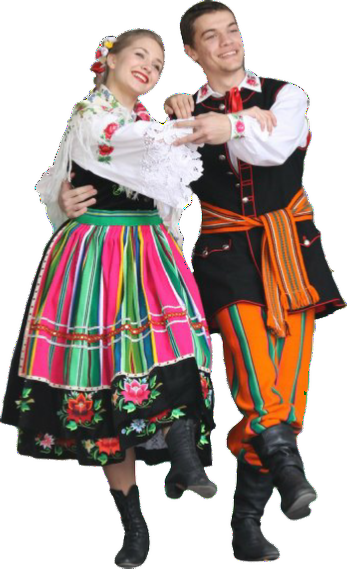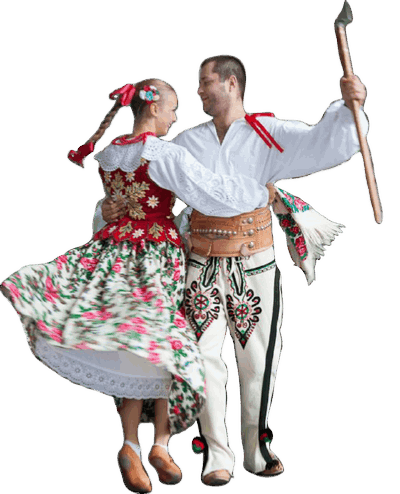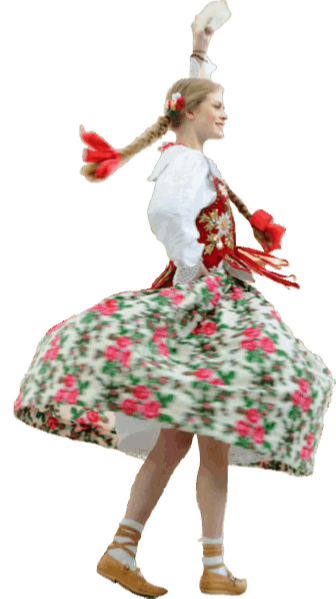Rzeszow Suite:
The southeastern farming region of Rzeszow boasts a huge number of lively and enormously energetic Polkas, with a variety of challenging steps. The dances are punctuated with characteristic hand movements and teasing songs between the sexes, often with bawdy or suggestive lyrics. The antidote to all the hyper-activity is the dance called "Slow", where partners rest on each other side by side, and briefly drag about.
Goralski Suite (Highlander Dance):
From the Carpathian Mountains of Southern Poland, come hard-working people who love to sing, dance and celebrate. The tradition has it that Goral men impress their women with their fancy dancing, and complicated footwork. Completely unlike any other dance in Poland, it features very athletic and acrobatic performances by the men which includes their characteristic axe leaping!
Slask Suite:
A medley of captivating song and dance from the Upper Silesia region. The most popular,Trojak sequence, weaves a slow and dignified melody along with a livelier, vivacious dance composition.
The Trojak features a man and two women performing in many different formations. There are also waltzes and the Polka Trzeslonka, also known as the Shaking Polka. Costumes for boys include long sleeveless coat, pants tucked into high boots, and a wide colorful belt. Girls wear long skirts with a floral apron, and a white blouse with eyelet details under a colorful vest. A headpiece of ribbons and flowers is also worn.
Lublin Suite: Festive wedding dances, including the popular walking Mach, the fast moving Cygan and finally, the exciting Oberek from Poland's eastern border region. They vary in tempo and mood. The dancers also constantly change the direction of movement.
Goralski - Zywiec / Zywiec Highlanders :
From the southwestern corner of the Trans-Carpathian Region, comes the dynamic and captivating dance from just one tiny mountain area. This area of Zywiec holding mountain culture, is vigorously displayed in the POLONEZ’s children group choreography. It highlights the knee-work, and other acrobatics of the boy's competitive dance moves.
Kaszuby Dances are mostly gentle, joyful and graceful. Although they have many characteristic traits of the dances from the rest of Poland, especially from the neighboring regions of Warmia, Wielkopolska and even Slask, they reveal obvious Swedish and German influences both in music and in dance steps. They can be divided into dances of the rural population and of people of the sea – the sailors and the fishermen. They were danced during various events in the life of the Kashubian people. They were part of seasonal or family celebrations such as harvest or wedding, and of rituals and ceremonies which often had their origin in pagan customs.
Polish Flowers: Walking Dance that symbolizes the beauty of the Polish landscape and nature.



